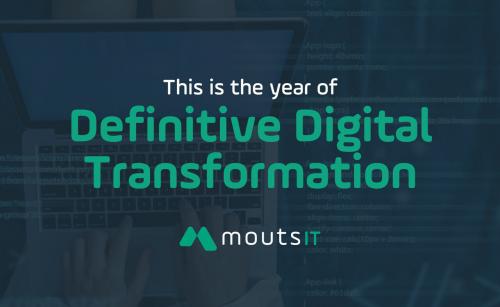This Is the Year of Definitive Digital Transformation

Digital transformation is no longer a competitive advantage, it’s an urgent necessity. Companies that continue postponing innovation, restructuring, and technology projects are taking a serious risk: being left behind.
🚨 The market won’t wait. Your customers won’t wait. Neither will your competition.
If you’re noticing that outdated processes, manual systems, and a lack of integration are holding back your business growth, then it’s time to act.
Here’s a step-by-step guide to finally move forward with your digital transformation:
1. Identify the real need
Every transformation begins with a clear and honest analysis of your current situation:
✅ Which processes are causing bottlenecks or losses?
✅ Are your systems integrated, or is information scattered?
✅ Is your team spending more time fixing issues than innovating?
Pain points are the starting point. Recognizing them is the first sign of maturity for an efficient transformation.
“What gets measured gets managed.” – Peter Drucker.
Start with a clear and measurable diagnosis.
2. Prepare your structure and organizational culture
Digital transformation is not just about technology, it’s about people.
Before implementing any solutions, it’s essential to:
✅ Build a culture of innovation and change;
✅ Train and prepare your team for new tools and processes;
✅ Align leadership to sponsor and support the transformation.
Changing the mindset of the company is just as important as implementing new tech. The success of digital transformation depends on cultural adoption across all levels.
3. Assess and map the processes to be transformed
Before jumping into action, you need to map out how the transformation will take place:
✅ Which areas need immediate automation?
✅ Where can data intelligence improve decision-making?
✅ Which critical processes should be optimized first?
Precision here makes all the difference. By understanding what will be impacted — and how it affects the business — you can act strategically and avoid wasting resources.
4. Talk to the experts: Mouts IT
Now it’s time to put the plan into action. But doing it alone can be more expensive and take a lot longer.
At Mouts IT, we combine technology and strategy to create tailor-made solutions that make sense for your business.
✔ We integrate processes to increase efficiency
✔ We automate systems to reduce costs and errors
✔ We turn data into insights for better decisions
✔ We turn cybersecurity into a core pillar of your operation, bringing more stability and protection to your business.
🚀 Digital transformation is not about the future, it’s happening now. And you only have two choices:
Be the leader of your growth.
Or watch your competitors take the lead.
Ready to take the next step?
Talk to Mouts IT and turn your challenges into real results.
📩 Let’s talk? Reach out and discover how technology can take your business to the next level.
Related news
Innovation, the global market and divers topics about the technology universe are currently available on our blog.
 Cases
Cases
Big Data in energy: how to manage data in the energy sector?
The energy sector is one of the fundamental pillars of the global economy, driving everything from large industries to domestic consumption. With the advancement of digital technologies, the amount of data generated in this sector has increased exponentially, making Big Data an essential tool for companies seeking to stand out in a competitive market. But how to collect and analyze this data effectively? And what are the benefits of a well-done analysis?
 Cases
Cases
Energy and sustainability: 3 innovative technologies in the energy sector
Sustainability has become a central issue in the energy sector, driven by the need to reduce environmental impact, ensure energy security and meet growing demands for cleaner energy sources. With increasing pressure to reduce carbon emissions and adopt more sustainable practices, the sector faces significant challenges, but also promising opportunities.
 Cases
Cases
Why is cloud migration important for the energy sector?
Energy market professionals can already see that the sector is undergoing a significant transformation, driven by the need for greater efficiency, sustainability, and innovation. Amid these changes, cloud migration has stood out as one of the main strategies for companies looking to optimize their operations, reduce costs and improve collaboration.
